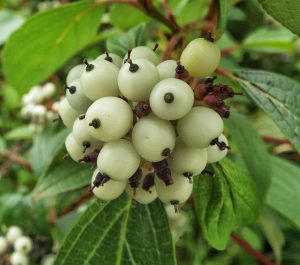Are you looking for some gothic Halloween inspiration this October? Here are a selection of some of the scariest sounding and spookiest plants that will satisfy the most horror-obsessed among you.…
 Bleeding heart (Dicentra spectabilis)
Bleeding heart (Dicentra spectabilis)
Flowers appear in early spring adorning the garden with attention-getting, heart-shaped flowers borne on arching stems. Attractive bluish-green foliage emerges first as the plant wakes from dormancy.
 Deadly Nightshade (Atropa belladonna)
Deadly Nightshade (Atropa belladonna)
In the Middle Ages, Deadly Nightshade was believed to be the devil’s favourite plant and anyone that ate the berries would be punished for eating his fruit. Witches and Sorcerers would use the plant’s juices in many of their ointments and brews. Be careful though, this plant is so toxic that even touching it could poison you!
 Devil’s Claw (Proboscidea louisianica)
Devil’s Claw (Proboscidea louisianica)
This is a pretty annual with pink flowers. However, as the plant matures and it’s seed pods dry out, they split down the middle and reveal long, black very pointed “horns” at the end, like devilish claws.
 Doll’s Eyes (Actaea pachypoda)
Doll’s Eyes (Actaea pachypoda)
Named due to its glistening white berries resembling a doll’s eyeballs, complete with little black irises. The entire plant is extremely toxic to humans and, when ingested can cause hallucinations.
 Ghost Plant (Monotropa uniflora)
Ghost Plant (Monotropa uniflora)
This plant’s name is very fitting. Not only are Ghost plants white but they also can survive with no natural light. It’s a parasitic perennial living by draining nutrients out from its host plant – very ghoulish!
 Witch Hazel (Hamamelis mollis)
Witch Hazel (Hamamelis mollis)
The name witch in witch-hazel has its origins in Middle English wiche, meaning “pliant” or “bendable”. Witch Hazel plants produce thin petals that look wild and stringy. Take a look at the silhouette and you’ll see why.
 Wolfsbane (Aconitum napellus)
Wolfsbane (Aconitum napellus)
Wolfsbane is a perennial herb with attractive blue to dark purple flowers. In most stories, wolfsbane has been known to keep werewolves away. Apparently, and if you’re a fan of Harry Potter, you may also already be aware that it also prevents a person from turning into a werewolf during a full moon!

Red Spider Lily (Lycoris radiata) is also known as the corpse flower. The bulbs of the Lycoris species contain the alkaloid poison, lycorine, which causes vomiting, diarrhoea, convulsions, and sometimes death in humans and other animals.
In times gone by, to ensure graves were left alone, people planted poisonous red spider lilies over buried bodies to deter animals. Graves and death were soon associated with the red spider lily, earning it the name of ‘death flower’ and the even darker, ‘corpse flower’.
Halloween experiences in Sussex
Discover some more creepy plants, follow haunted trails and carve pumpkins at one of these Halloween events near you:
At RHS Garden Wisley from Saturday 21st until Sunday 29th October you can go on a spooky garden trail and take part in seed planting and craft activities https://www.rhs.org.uk/gardens/wisley/whats-on/half-term
Tulleys Farm, near Crawley, is hosting a Shocktober Fest from Friday 5th October to Saturday 3rd November and is celebrating over 25 years of screams https://www.shocktoberfest.co.uk/
Drusillas Park in Alfriston, East Sussex has some great Halloween activities during its Shriek Week which runs from 21st October until 29th October https://www.drusillas.co.uk/halloween-activities-in-east-sussex
